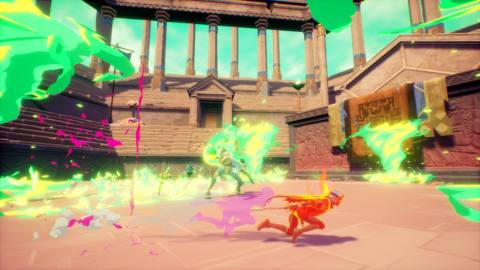Stardew Valley is all well and good, but these smug farmers would have nary a field to furrow if it weren’t for the true origin point of the global economy: blacksmiths. Without some guy with a hammer, agriculture wouldn’t have any of the tools it needs to keep itself going. No scythes, no hoes, no ploughs, no nothing. Then again, without farming the blacksmiths wouldn’t have food. Oh no, I just realised we’re trapped in an endless and beginningless cycle of social reproduction. I need to lie down.
This is what I’ve been thinking about as I play While The Iron’s Hot, a kinda-sorta Stardew-esque thing from Bontemps Games, and another of those smaller, easily overlooked but interesting games in a Game Pass subscription. Set in a fantasy world, you play a smithy who’s just arrived in town to hit hot metal and chew bubblegum, and you’re all out of gum.
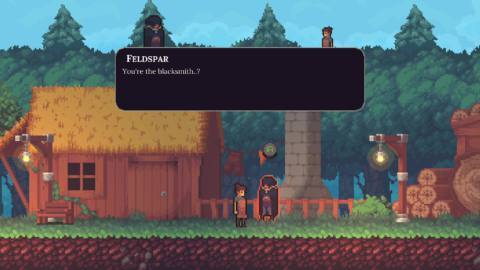
Agent smith
I say it’s Stardew-y because, well, you spend a fair bit of time upgrading your forge and its surroundings while fulfilling requests for the locals. They need pans, swords, helmets, all sorts of metal tchotchkes and baubles, and you’re the only one with the know-how to do it. Fulfill requests, get money and materials, upgrade your forge, fulfill more complex requests. All the while, you have to keep an eye on your daily supply of energy—drained by performing tasks—to make sure you don’t keel over at your anvil. You know how it goes.
A time-tested and familiar pattern, but done in a novel way. For one thing, actually putting together your creations is a multi-step process: smelt your ore, hammer out the correctly sized plates, then bang them all together at your workstation, and it’s all pretty much a rhythm game. Screw it up and you’ll make low-quality goods, nail it and you’ll make the most gleaming, perfect kettle helm the world ever did see.
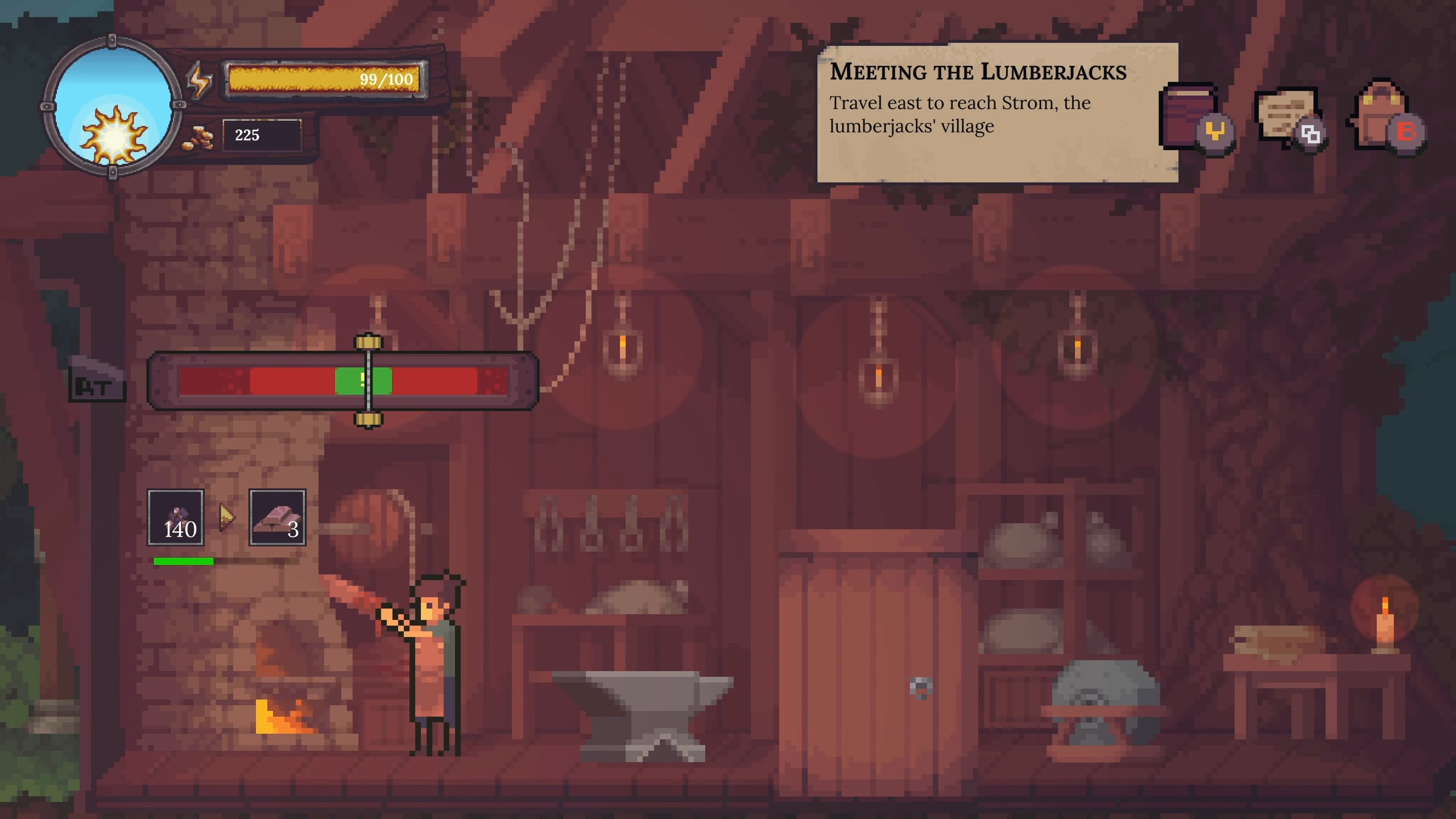
You’re not just arranging a bunch of ingots into a pattern and hitting go, Minecraft-style
It gets complex, too. You’re not just arranging a bunch of ingots into a pattern and hitting go, Minecraft-style, you’re checking which precise plates you need—a few 2×2 plates, plus a 1×2, plus a thin iron strip, say—and making those first. If you’re the kind of player to balk at friction, the constant requirement to refer back to your big book of blacksmith facts to make sure you’re not making the wrong metal plates for your recipe could get fatiguing, but I’ve never minded that kind of pushback from a game.
Heck, after a challenging run through Stalker 2 it feels downright comfortable, even with my chronic inability to keep numbers in my head. It does mean the whole thing is less of an easygoing, cosy game than it might seem at first glance, though.
Put the hammer down
All of this is before you even get into the world map. Times aren’t what they were: you can’t just smith in a small town and expect that to keep you going to retirement anymore. You have to hustle, and in While The Iron’s Hot that means setting out into the world to find new towns, new customers, new recipes, new swamps to fall into.
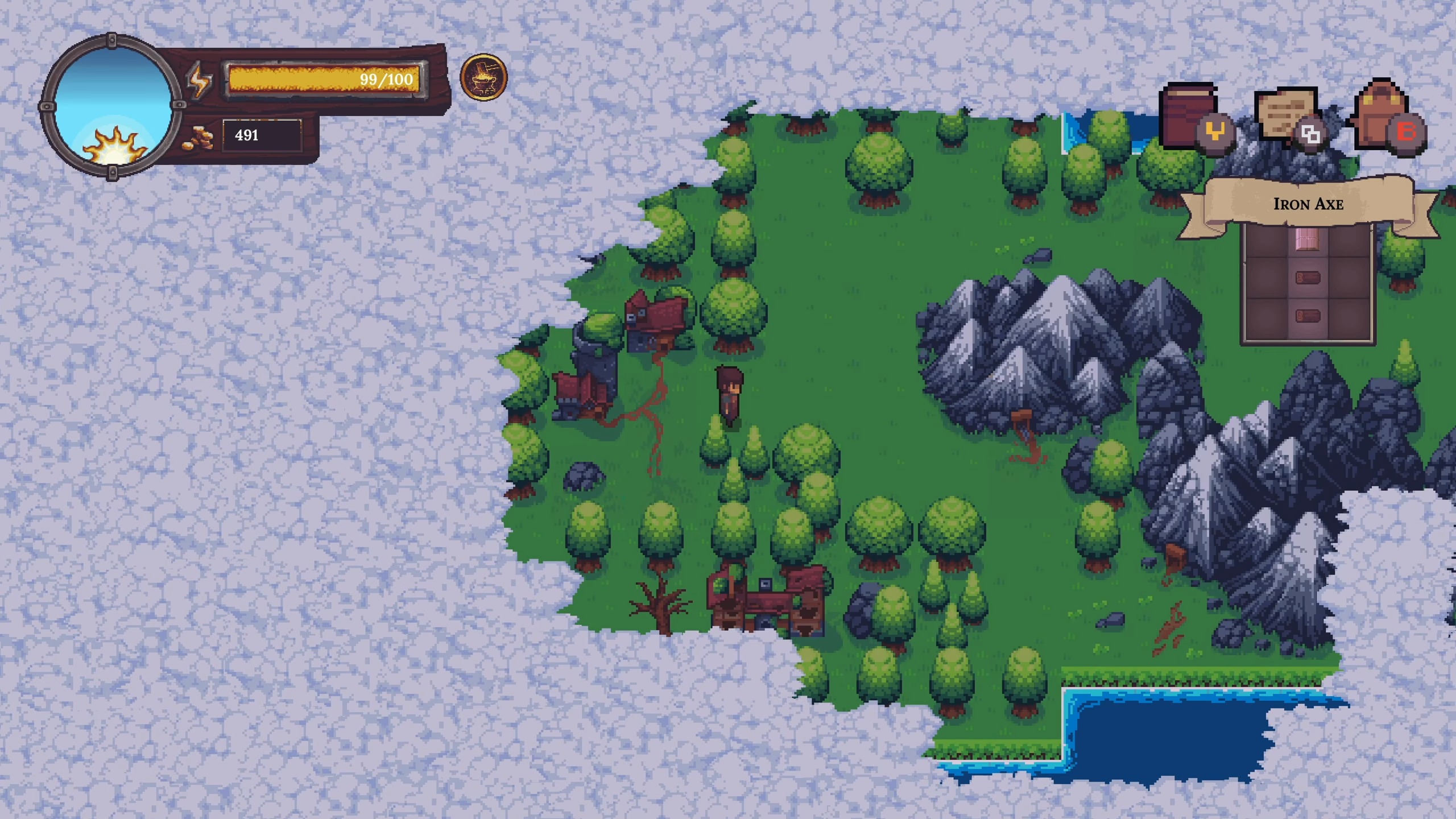
At first, that just means wandering out into the fog of war to find a way to the nearest town, or to an abandoned mine you can extract ore from. It’s only once you properly tool up—with tools you smithed yourself and an ox-drawn cart—that things get a bit riskier. Once you repair the bridge to the world’s northern quarters, you start running into more exotic locales and, a little frustratingly, invisible swamps you can easily find yourself falling into, sucking away valuable chunks of the day’s energy.
It’s something out of an old-school Pokémon, and a weirdly hardcore element in a game that looks at first blush like a chill smith sim. Still, I can’t help but admire the willingness of the game to pack on more mechanics, more things to think about, more plates to spin onto that base loop of making saucepans for helpless village idiots.
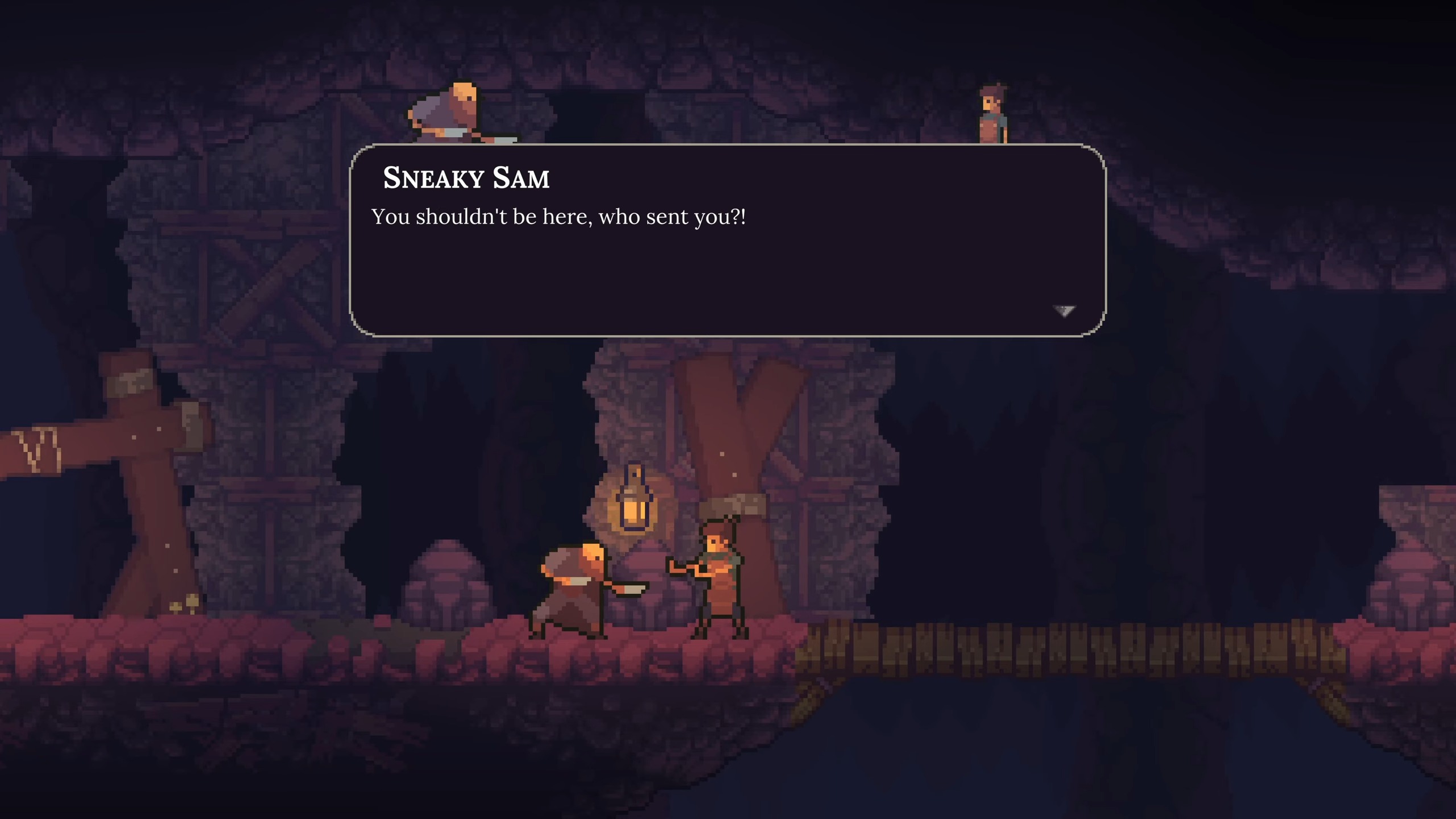
It’s a chewier approach to this kind of thing than I’m used to, but I’m enjoying my time with it. If you fancy checking it out for yourself, you can find it on Game Pass and Steam.



